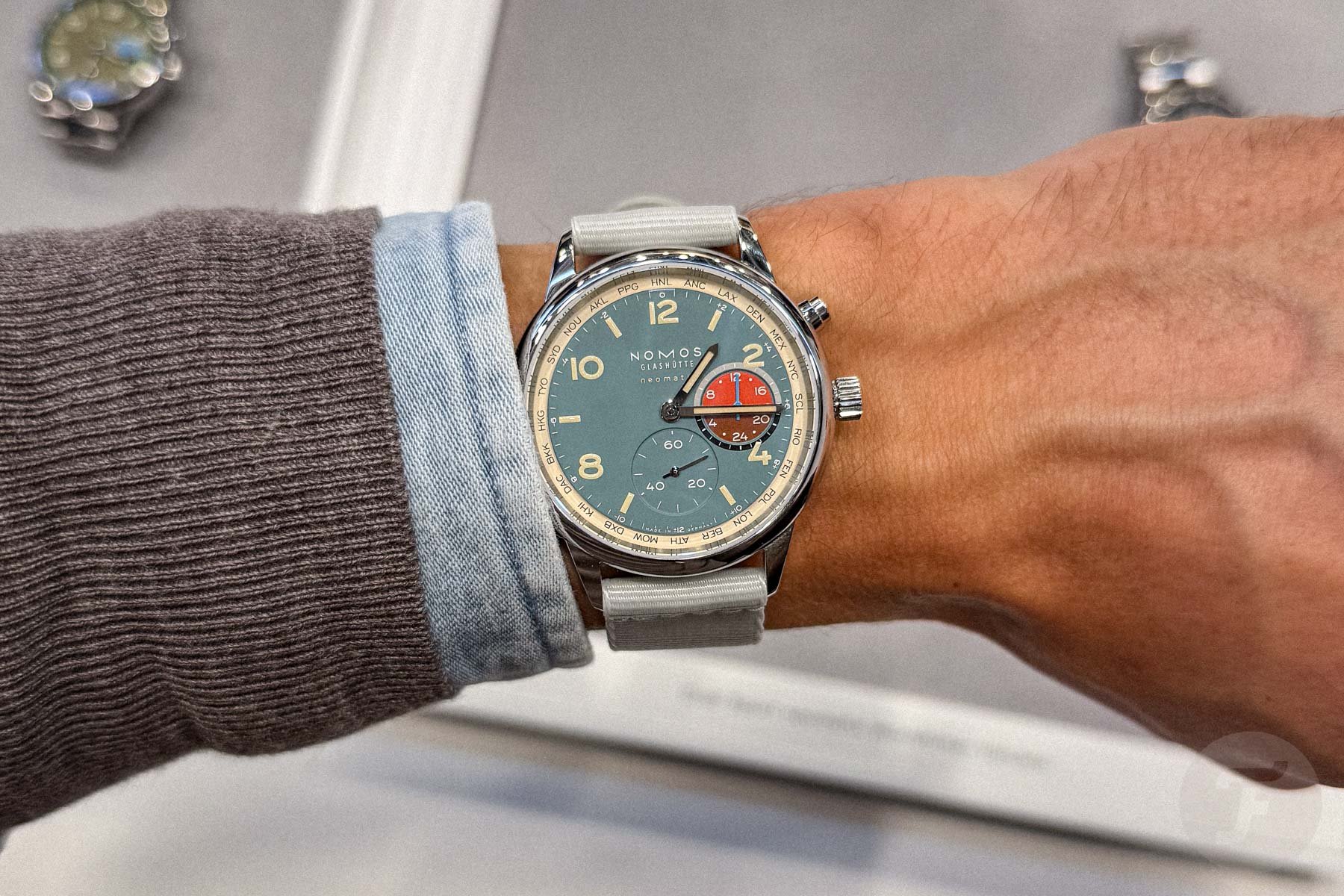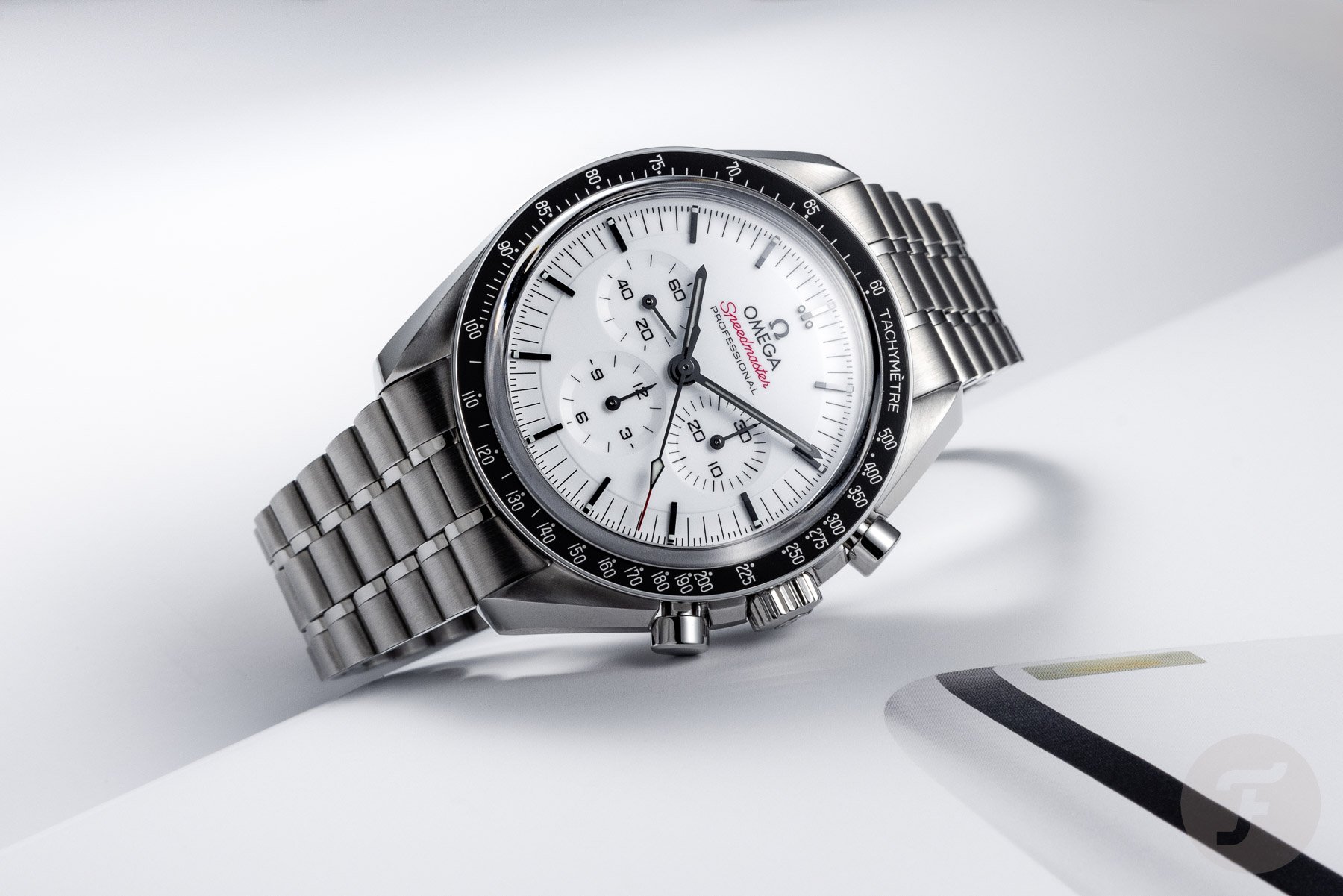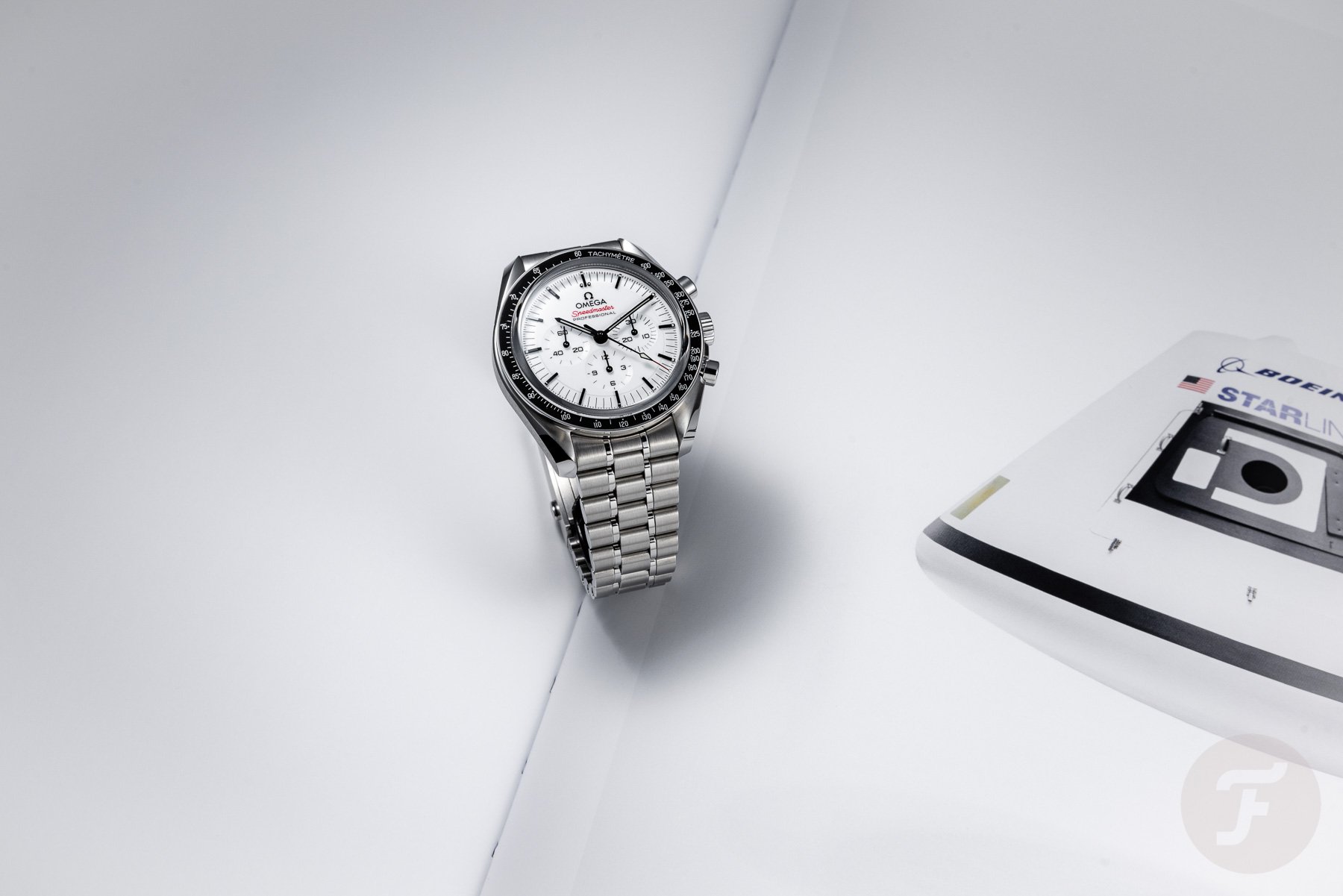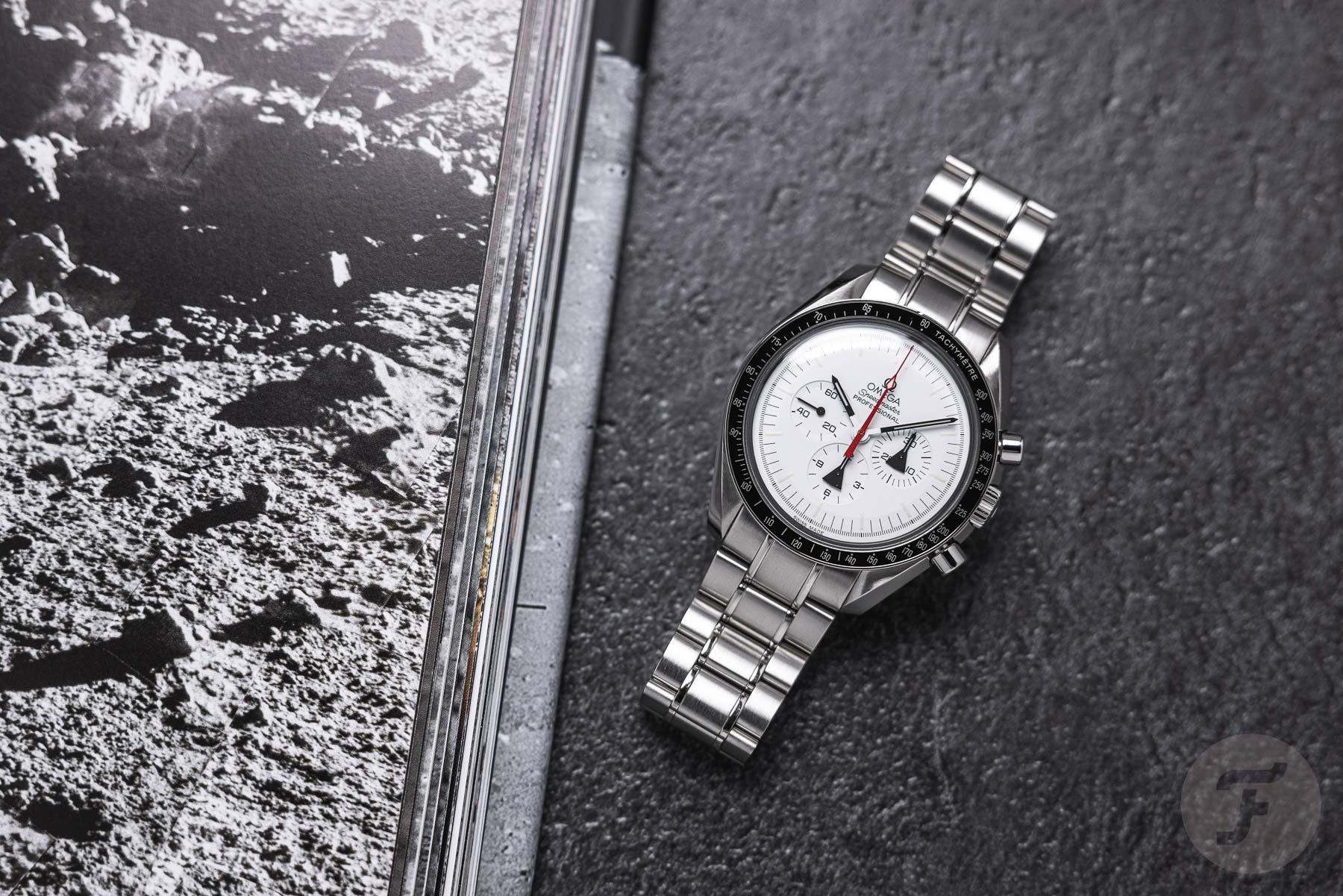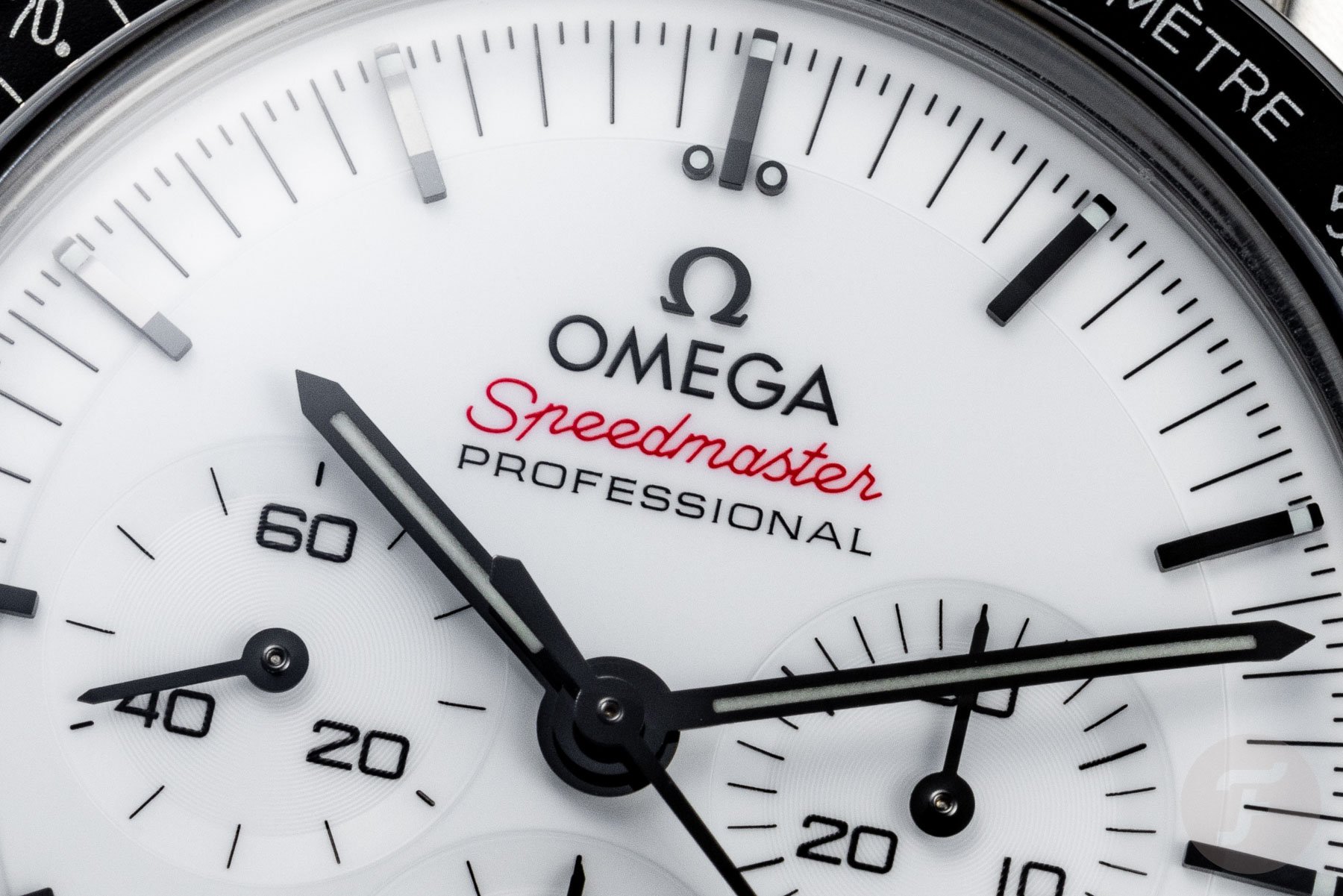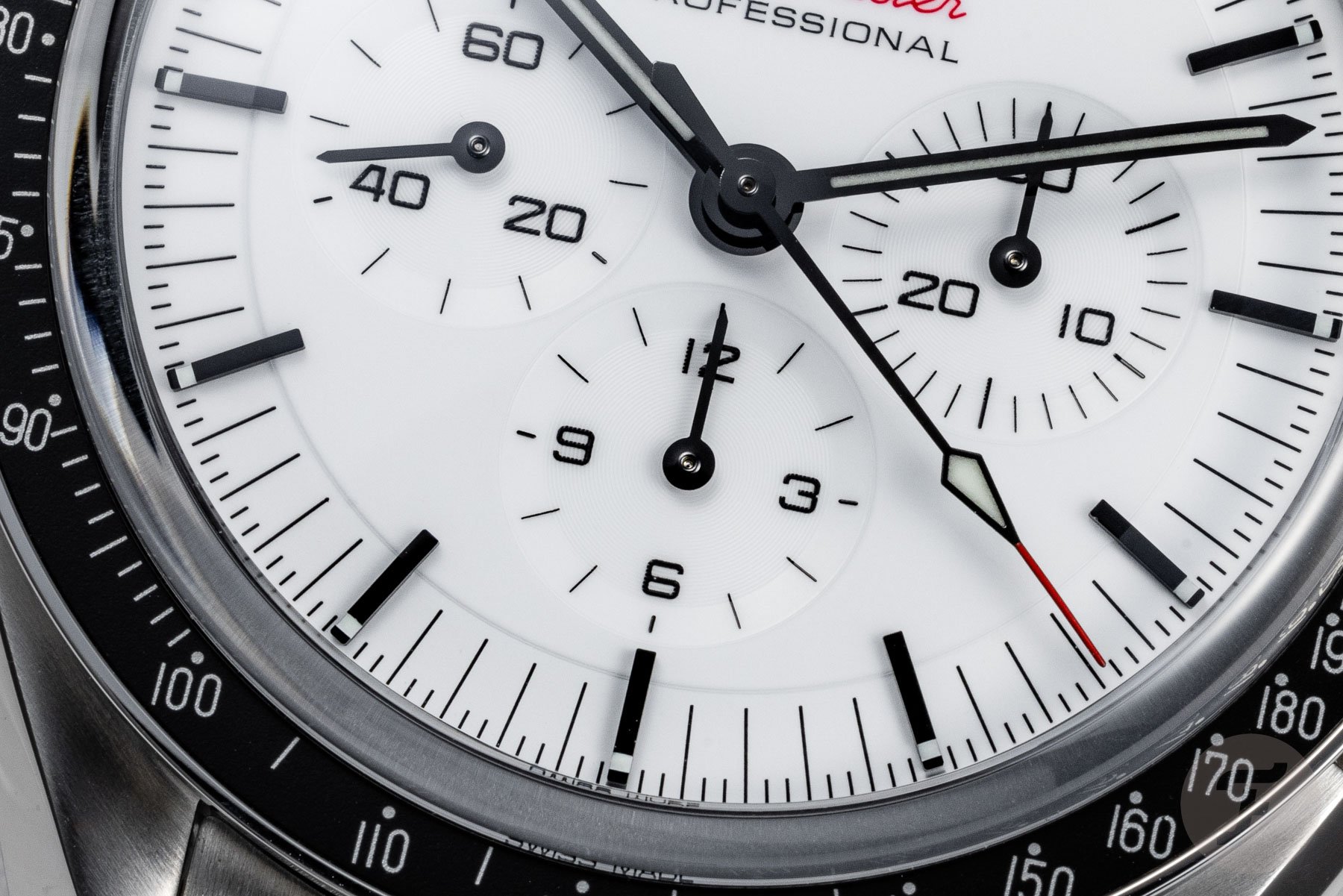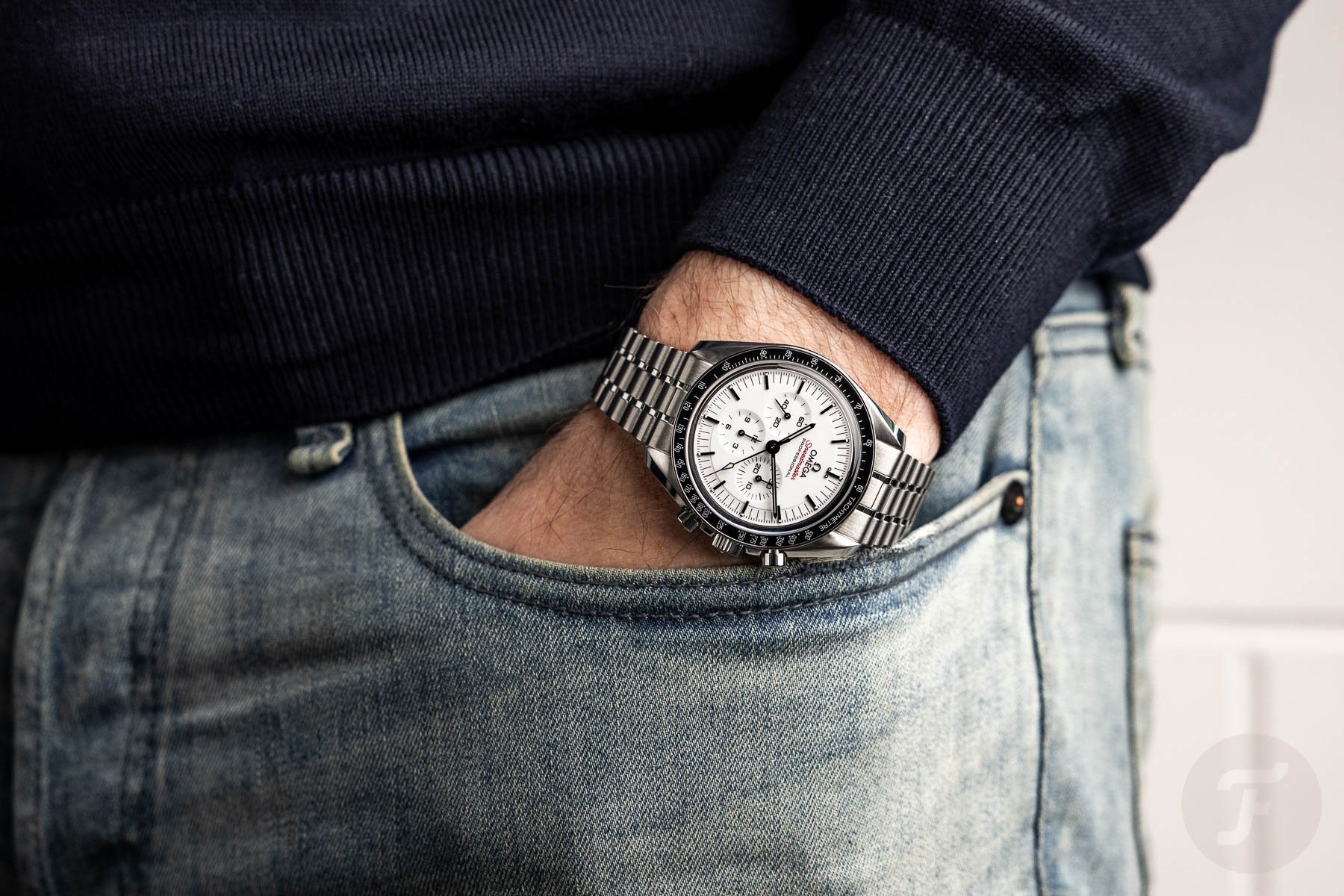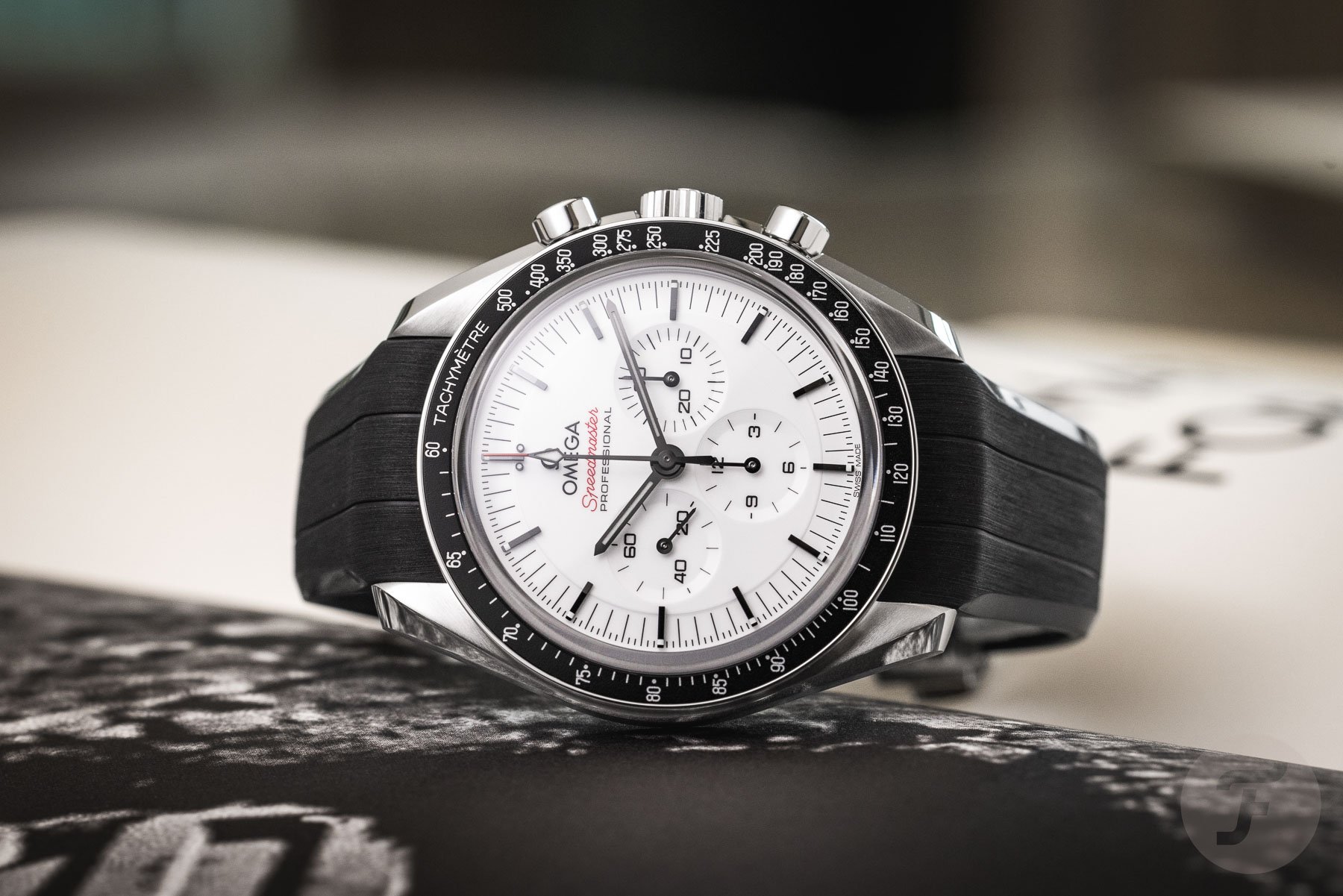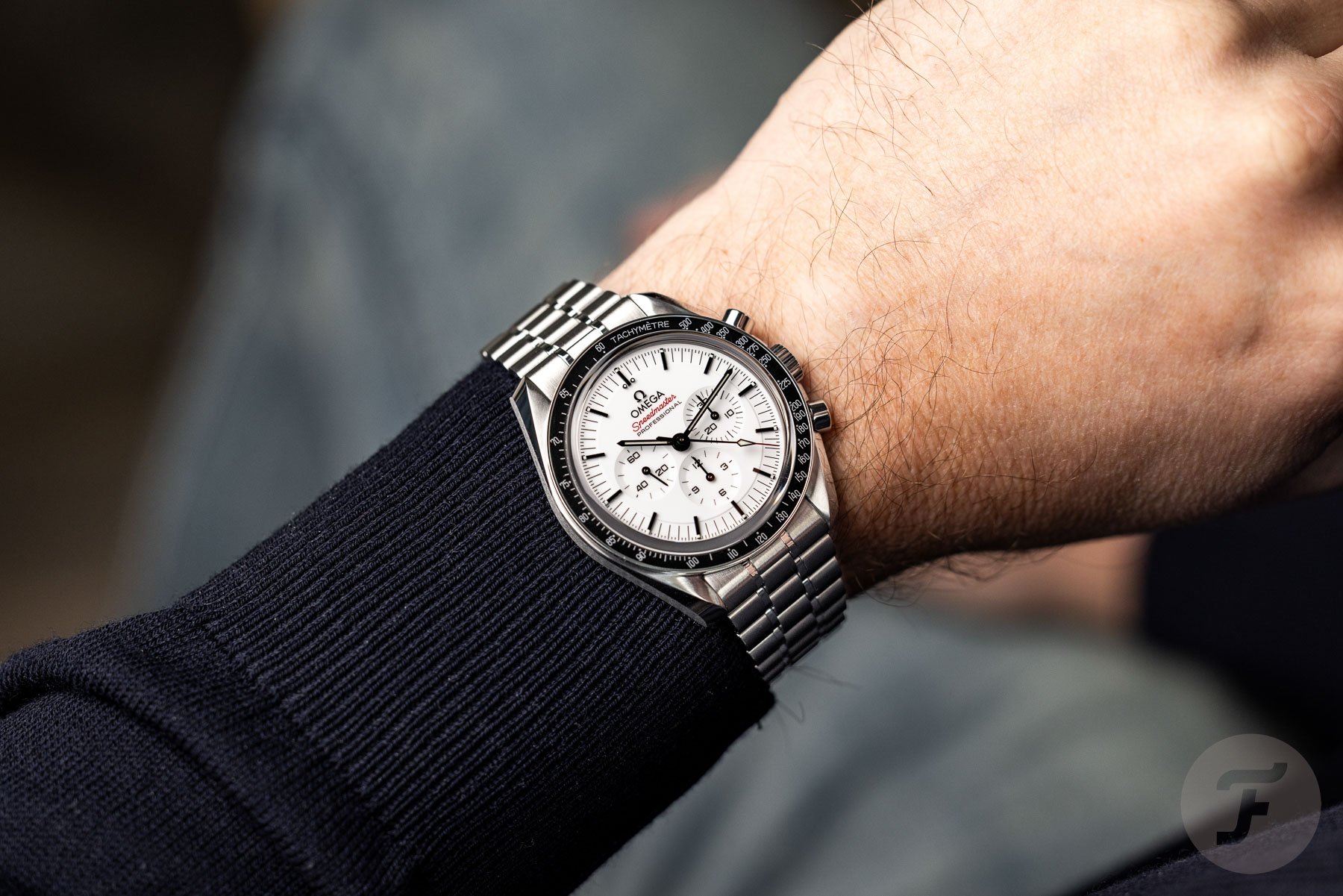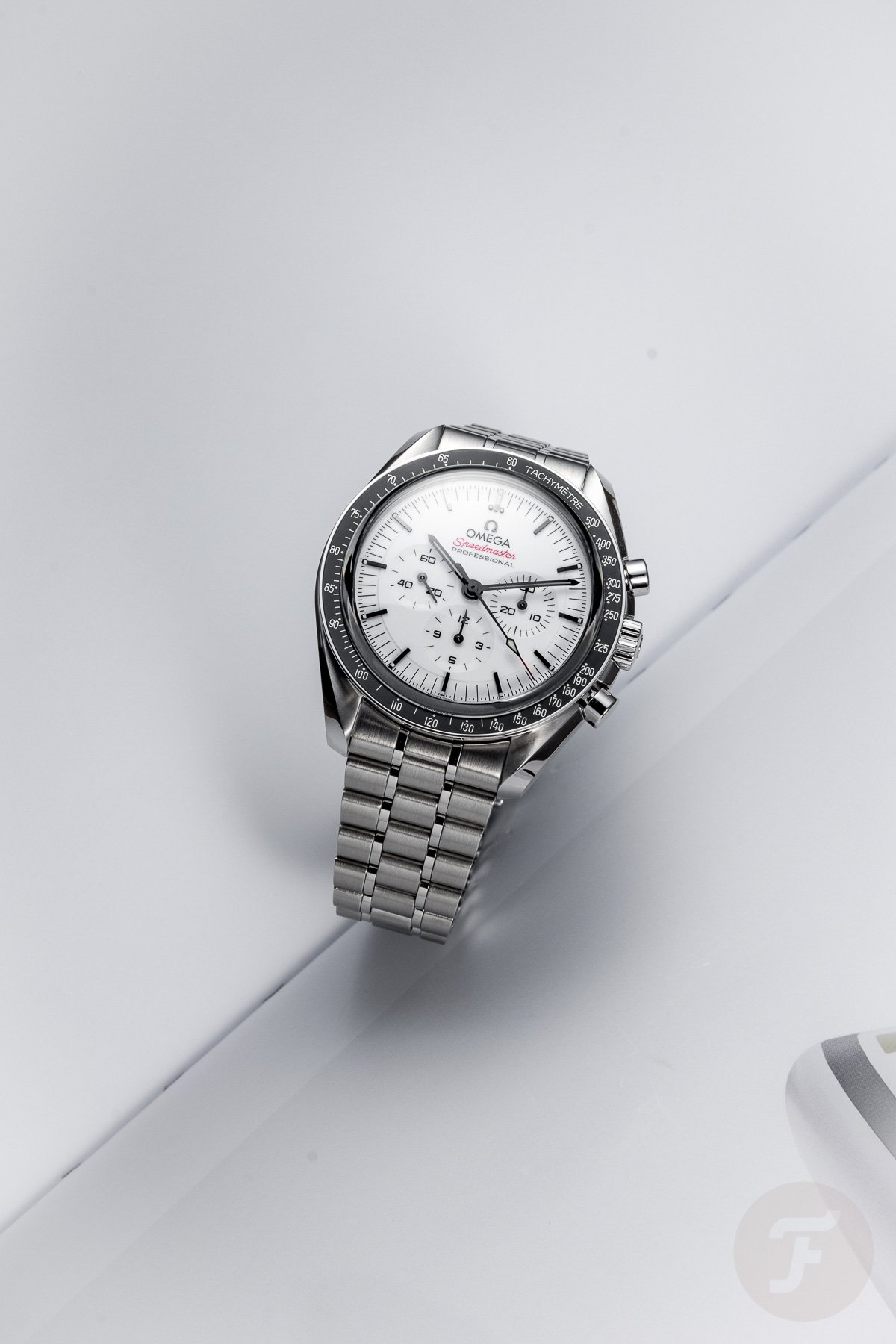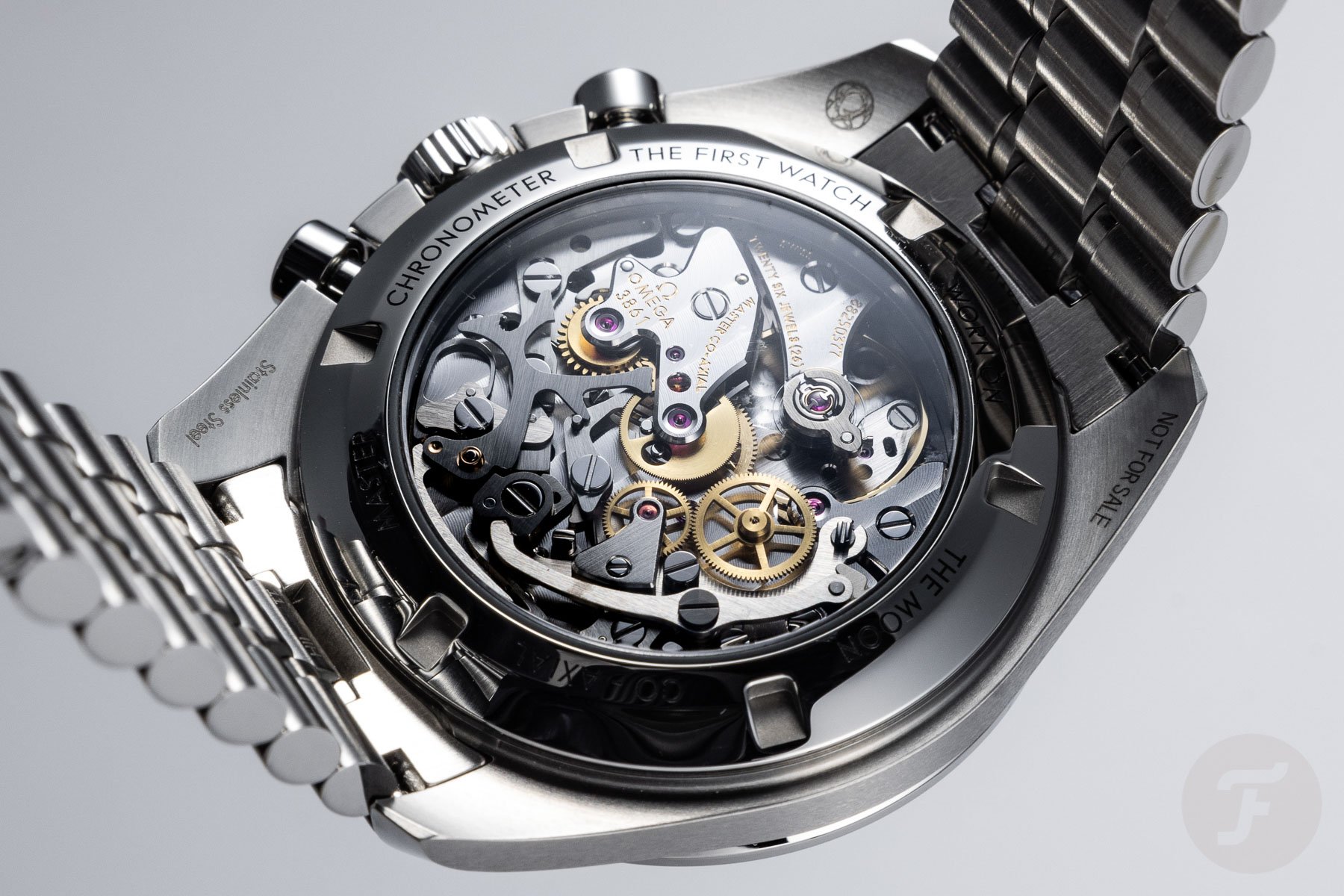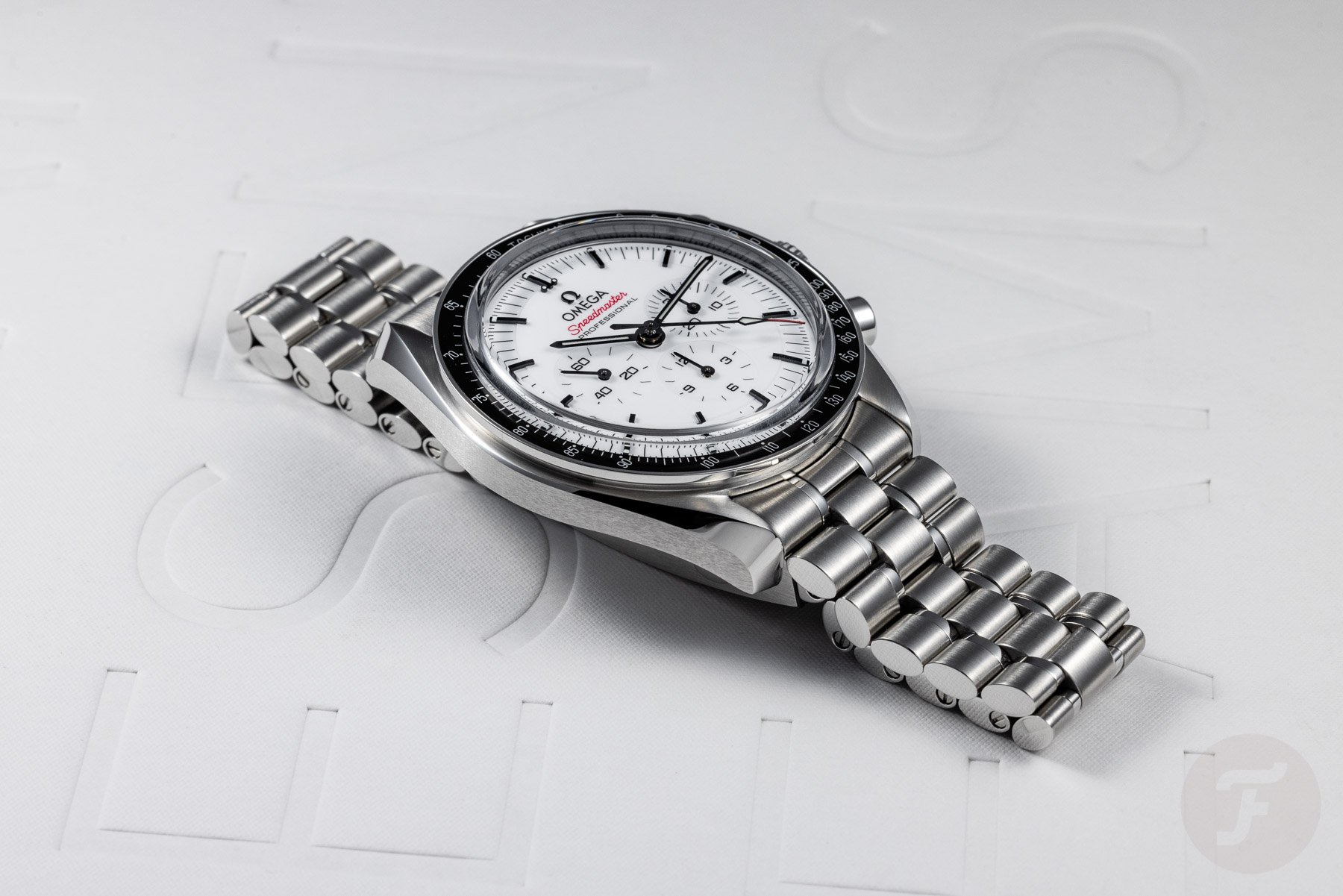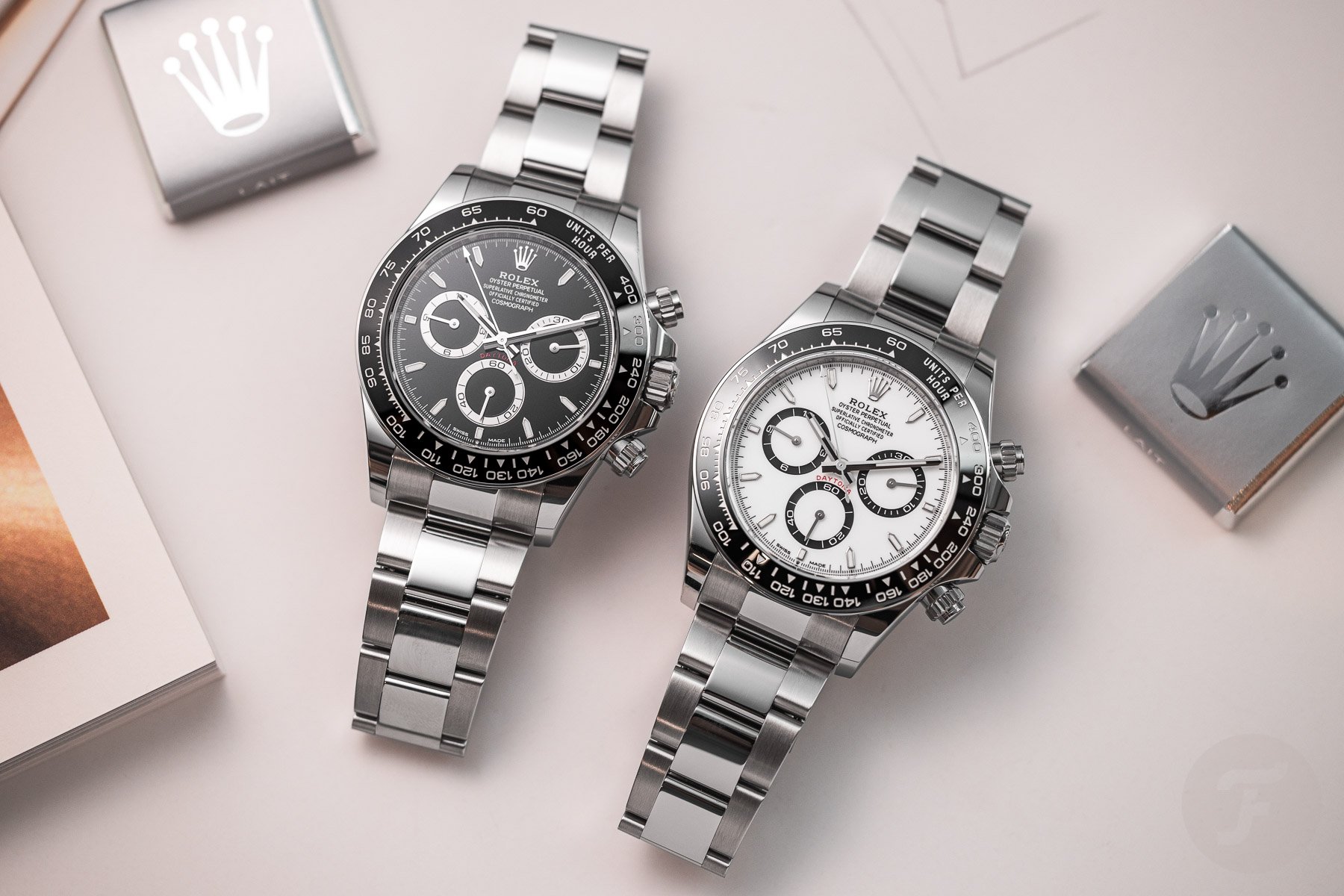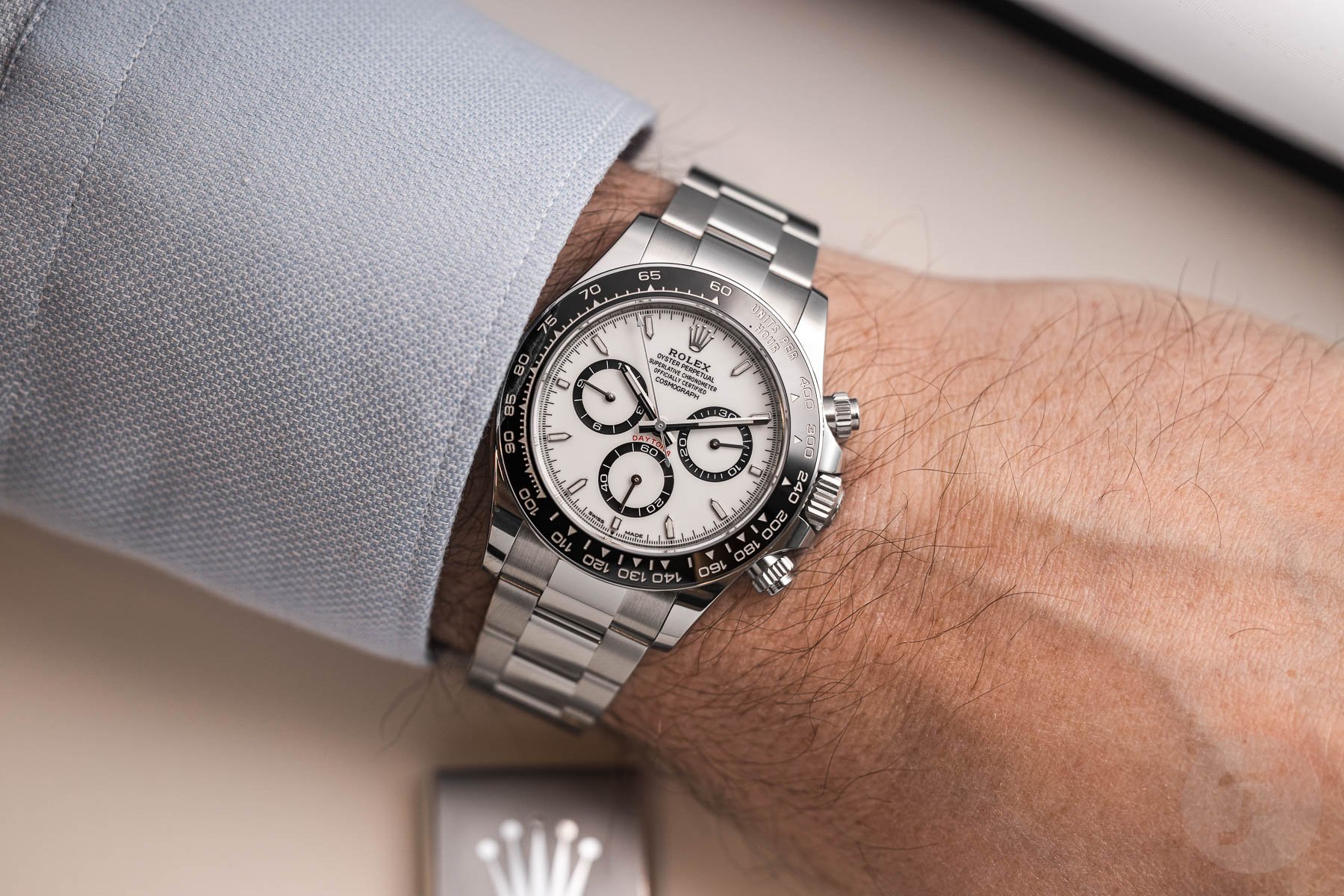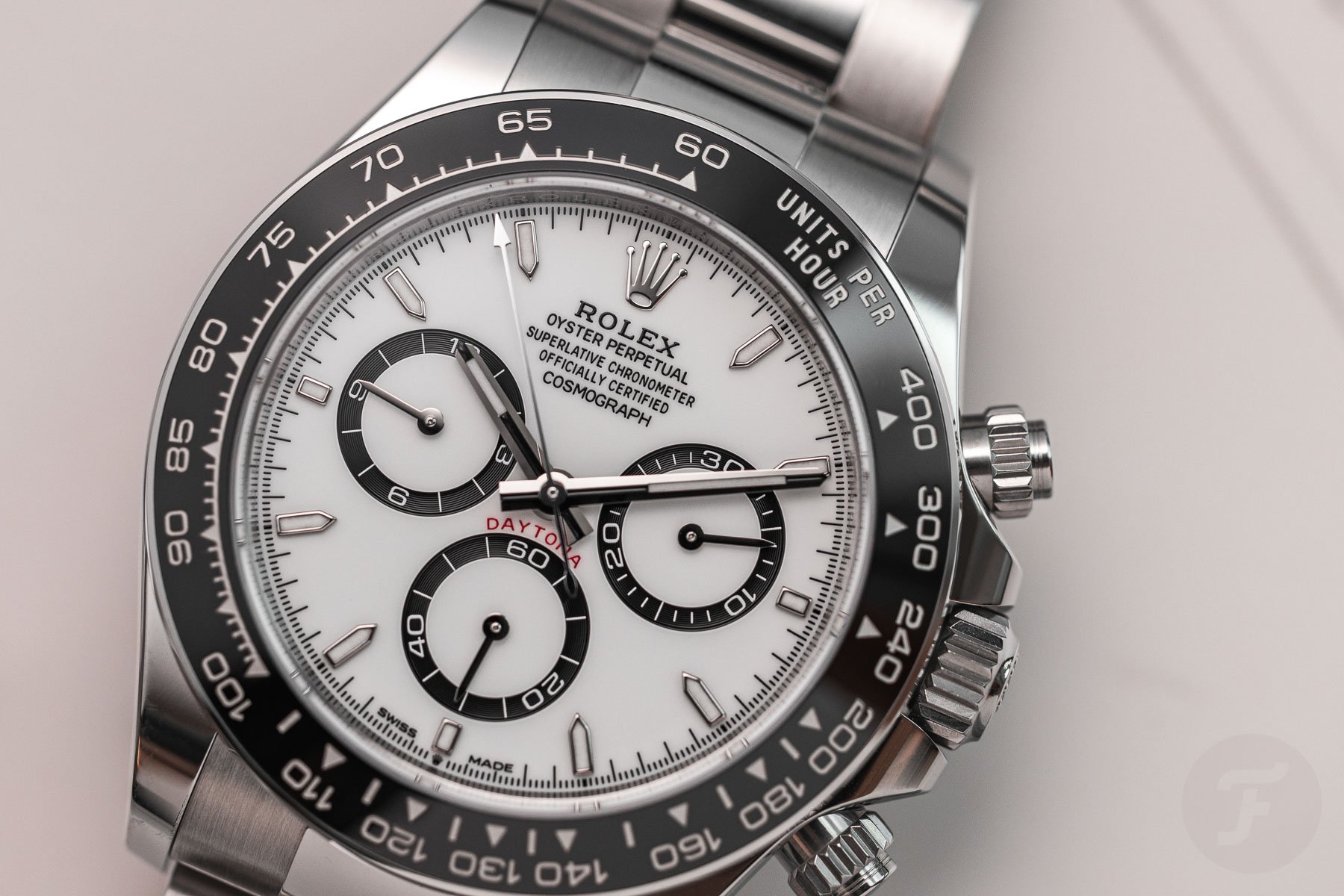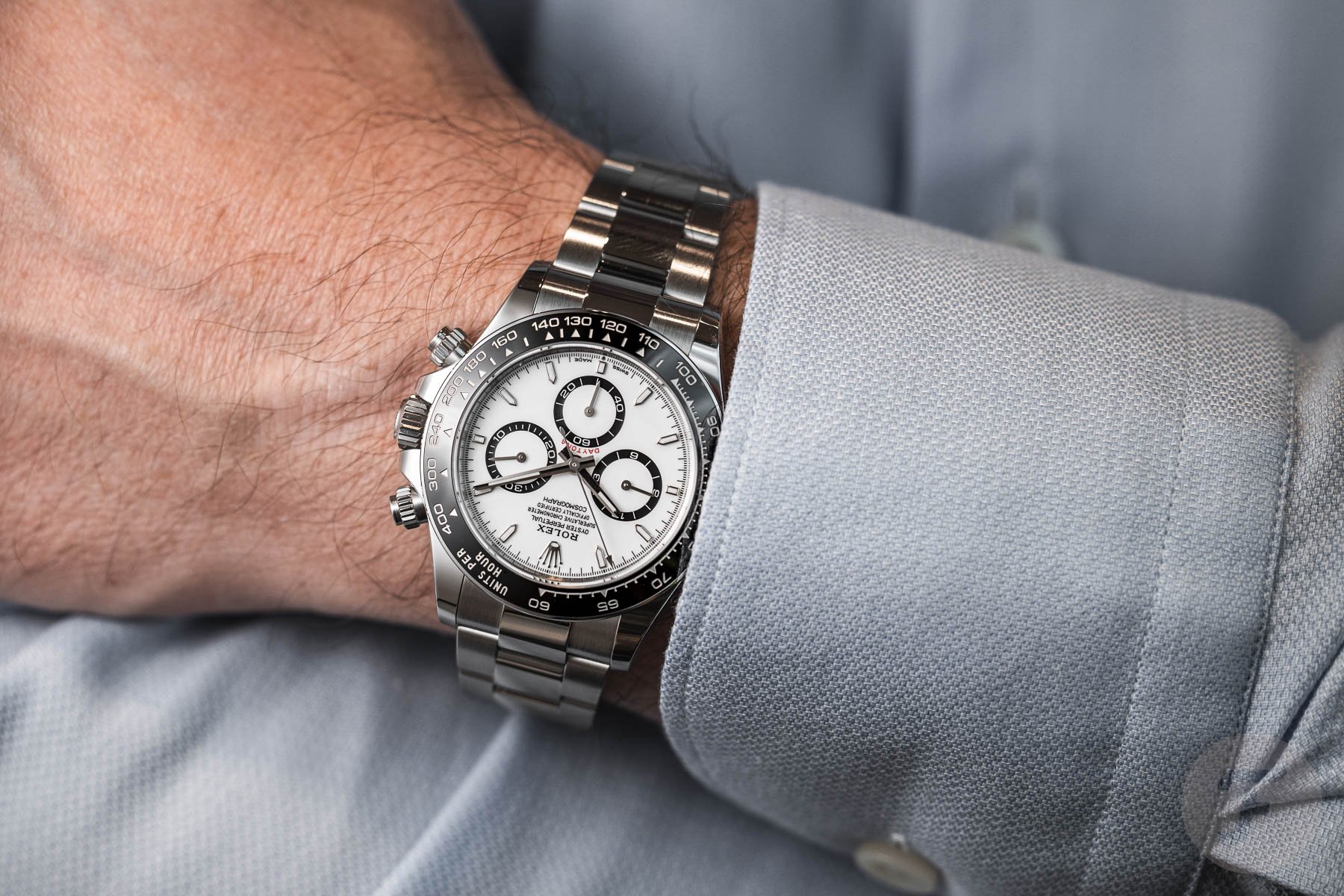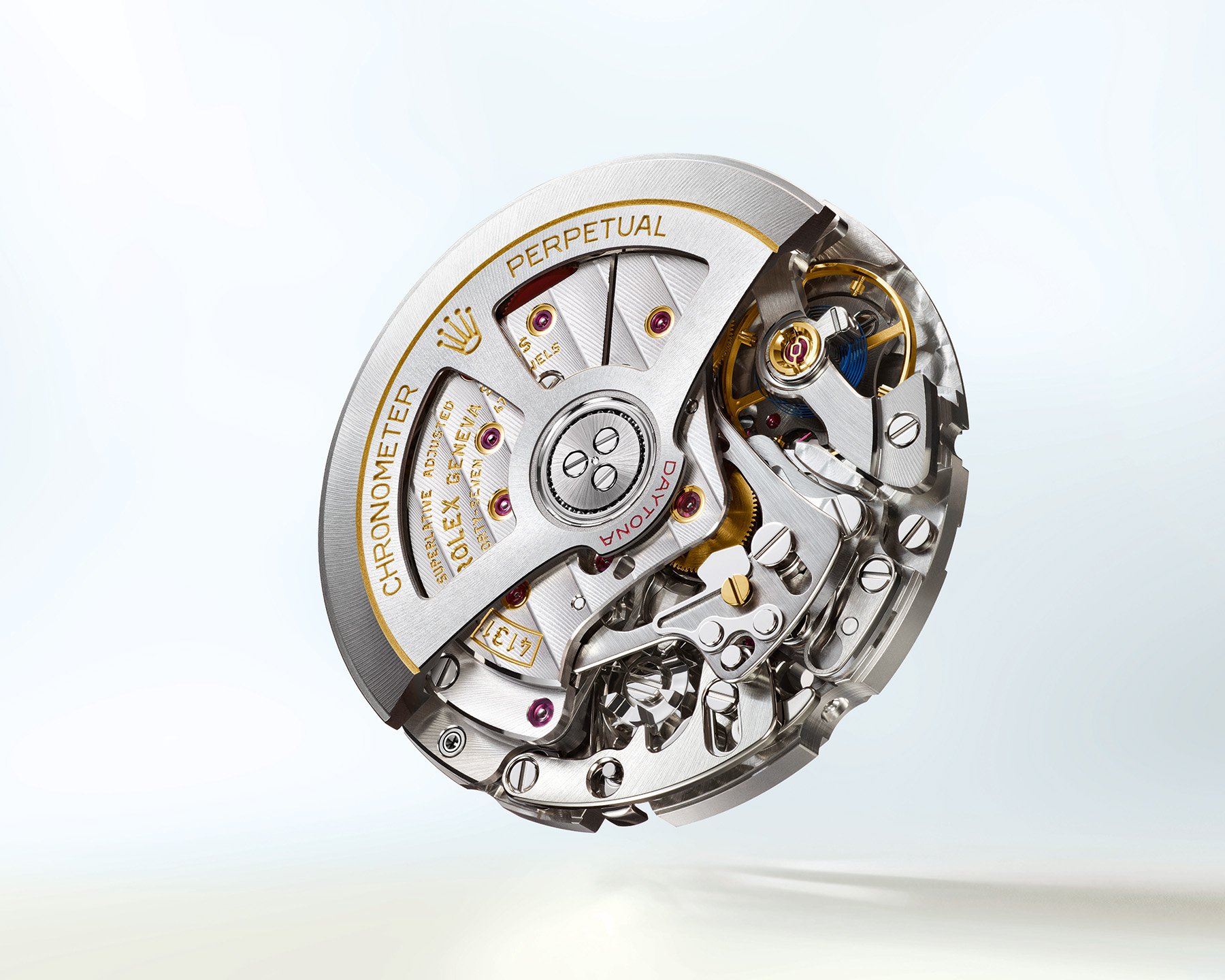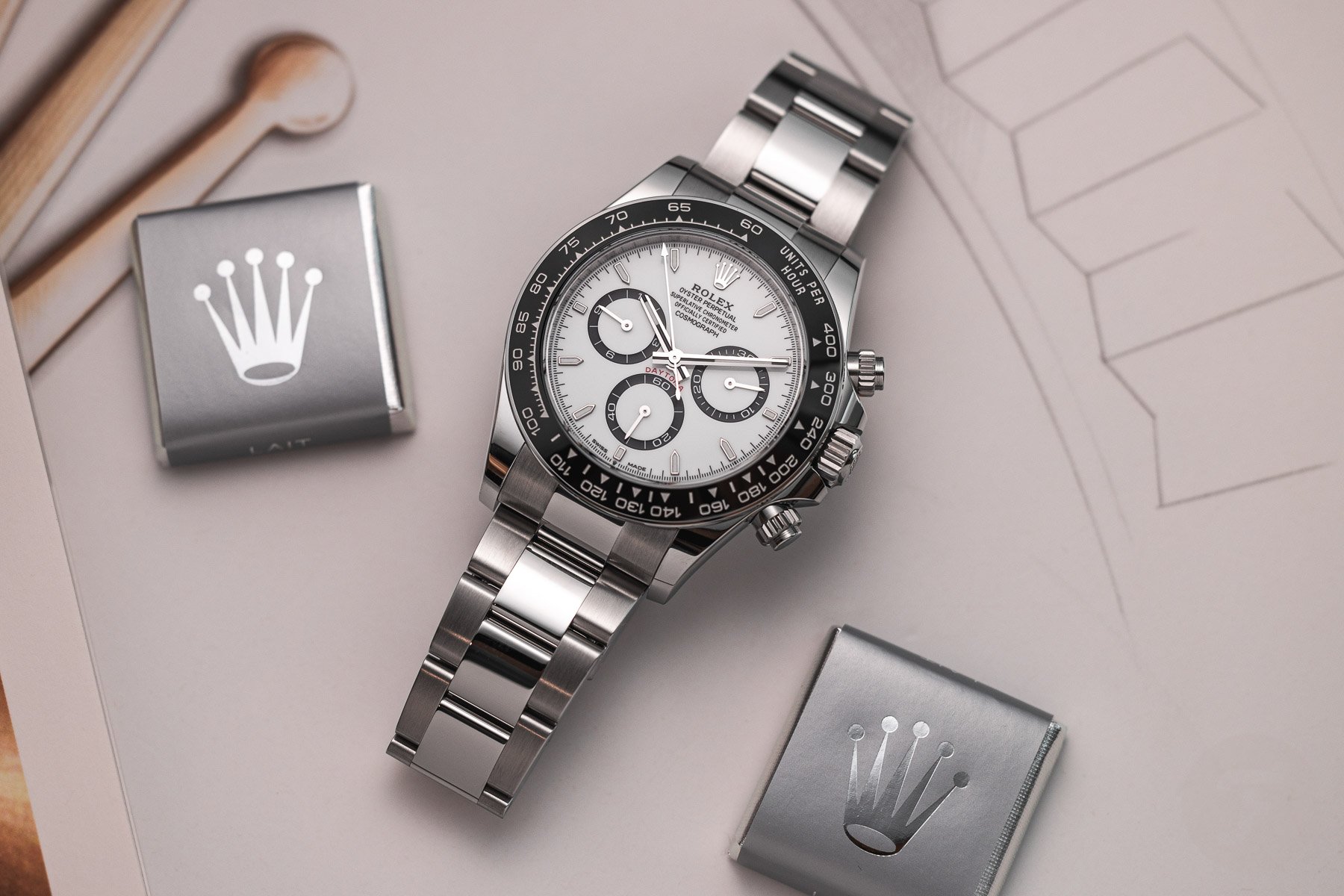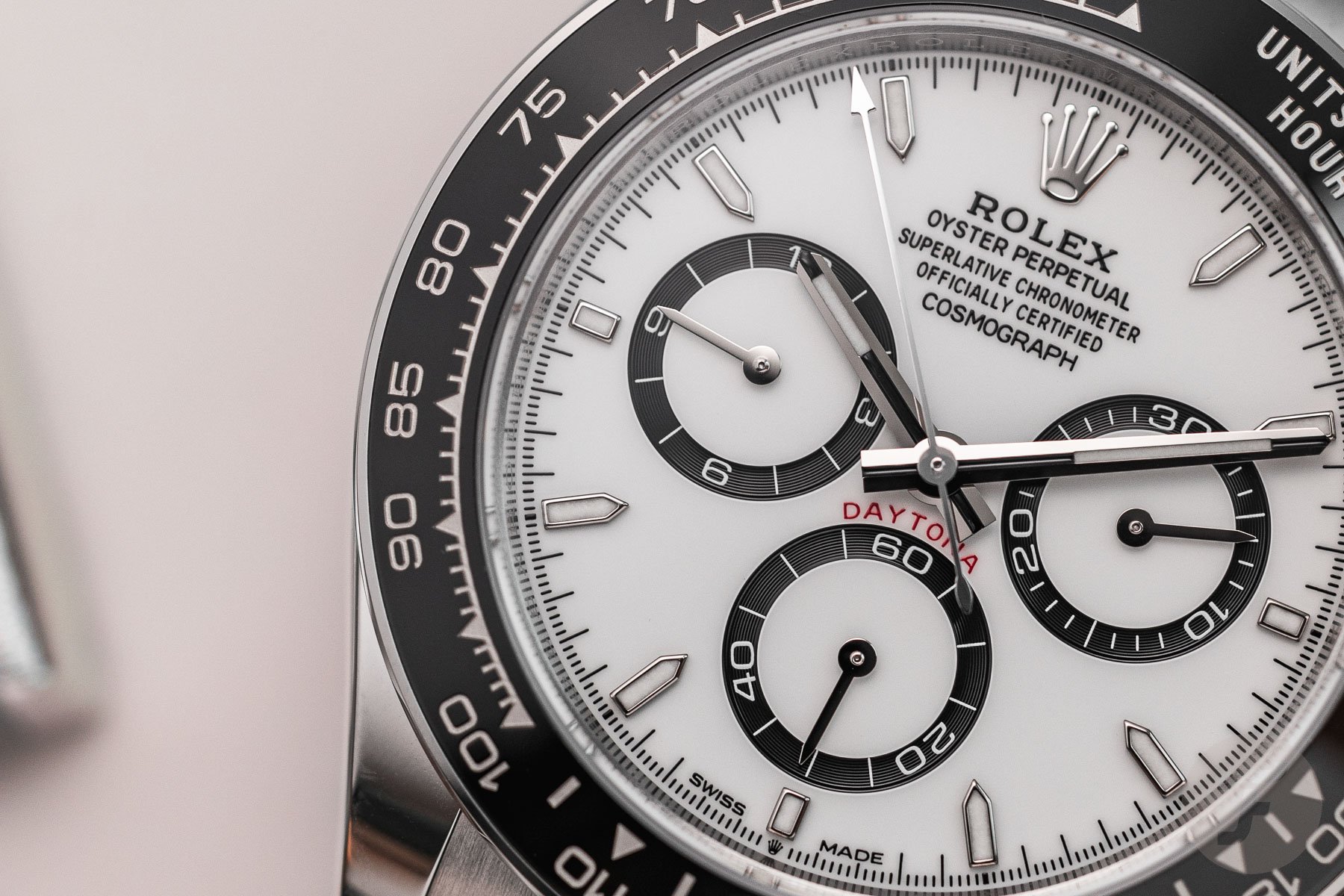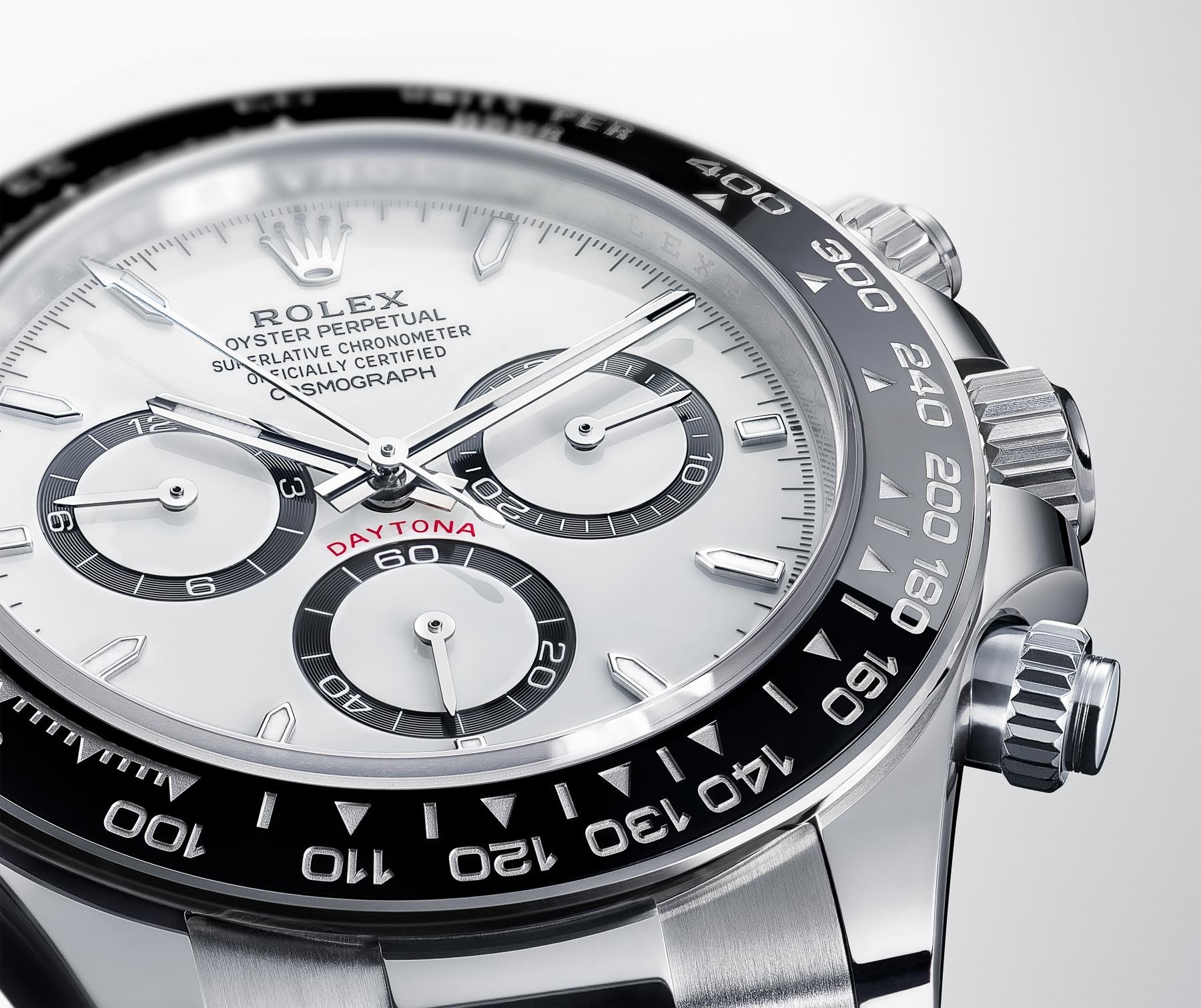Sunday Morning Showdown: Omega Speedmaster Moonwatch Vs. Rolex Cosmograph Daytona
It’s Sunday morning, and you all know what that means. It’s time for another Sunday Morning Showdown. This week, we paired two legendary chronographs because we found that we hadn’t pitted these particular versions against each other. It’s been roughly a year since Omega released the white-dial Moonwatch, but it feels like it was much longer ago, highlighting the incredible pace at which brands release new watches. The white-dial Speedy will go up against the white-dial Rolex Cosmograph Daytona. The current version came out in 2023, but it feels like it has been here forever. It’s time to find out which of these two famous chronographs will take the crown in this week’s Sunday Morning Showdown.
When the current white-dial Moonwatch came out, we put it up against its black-dial counterpart. To our surprise, though, we never pitted it against the white-dial Daytona. As a result, this battle is all about the white-dial versions of both watches. The Omega Speedmaster Moonwatch ref. 310.30.42.50.04.001 was met with a lot of praise when it debuted last year. It is currently available for €9,000 on the stainless steel bracelet. Remarkably, that is the same price as at its introduction last year. The white-dial Rolex Cosmograph Daytona ref. 126500LN was unveiled during Watches and Wonders 2023 along with its black-dial counterpart. Currently, the price is €16,100, making it significantly more expensive than the Omega. Still, something tells us the price is not the deciding factor for most people. Let’s find out!
Last week, on Sunday Morning Showdown…
Before we do, let’s take a quick look at last week’s battle. In last Sunday’s showdown, the Nomos Club Sport Neomatik Worldtimer crushed the Frederique Constant Highlife Worldtimer. The Nomos ended up taking 71% of the votes, leaving just 29% for the Frederique Constant. While a win for the Club Sport Neomatik Worldtimer was not necessarily a surprise, the margin was maybe slightly bigger than we had anticipated. The comments showed a slightly more balanced outcome based on the Nomos’s practical shortcomings, such as not having a date and not being a true worldtimer. In the end, though, the numbers don’t lie; the popular new Nomos comfortably took the win. We expect a much closer result this week, so now it’s over to Jorg and Mike to make their cases.
Jorg: Omega Speedmaster Moonwatch ref. 310.30.42.50.04.001
Let’s keep this nice and short, Mike, because most people will have decided already. Let me start by saying that I can’t use my usual “I prefer black dials over white dials” argument. In a battle of white dials, it needs to be about something else.
When it comes to Speedmasters, that is actually not that hard for me. As I explained in our previous showdown featuring both of the current Moonwatches, white-dial Speedmasters are much more exciting to see than the black-dial ones.
In terms of looks, my favorite Speedmaster is the 2008 limited-edition Speedmaster Alaska Project with its fully white dial. Another favorite is the much-desired Speedmaster Silver Snoopy Award from 2015, which I adore. They show that the visual brilliance of a white-dial Speedy is genuinely exciting. Lastly, there was also the Speedmaster “Albino” for the Italian market to celebrate the 40th anniversary of the Speedmaster. It shows the great visual potential for white-dial Speedmasters, so it only made sense that a similar version of the current Moonwatch would look great.
Not just a plain white dial for the Moonwatch
But Omega ensured that the Moonwatch’s white dial would not be a clinical, overly simplistic one. Instead, the brand chose to equip the watch with a white varnished and lacquered dial that looks super crisp. Additionally, the dial has a nice depth and plenty of detail thanks to the step down to the minute track and the concentric graining in the sub-dials. These details instantly make the white dial look better than the rather soulless white dial of the Rolex Daytona.
In the next step, the Omega designers opted to contrast the white lacquered dial with diamond-polished black PVD-coated hands and markers treated with white Super-LumiNova. These black details match the black bezel insert nicely, ensuring a balanced and well-thought-out look. In comparison, the white dial of the Daytona looks rather busy, especially with the abundance of text on the upper half.
On top of that, there is always the issue of the two chronograph counters sitting slightly higher than the center pinion. It’s one of these “what has been seen cannot be unseen” elements that always stands out immediately. In the end, I much prefer the Speedmaster’s dial for a list of reasons.
But that’s not where it ends. In addition to my issues with the Daytona’s white dial, there is also the obvious problem of the Daytona’s screw-down pushers. They make using the chronograph impractical and, once unscrewed, make the watch look weird.
As we all know, there is no practical reason to keep using this style of pushers. On top of that, the combination of the pushers, the crown, and the crown guards creates an entire visual unit on the right side of the watch. Let’s say it’s an acquired taste and one that I do not prefer over the Speedy.
The price difference between the Moonwatch and the Daytona is hard to ignore
That brings me to my final point — the price difference between the two watches. Currently, the list price of the white-dial Moonwatch is €9,000, whereas the retail price of the white-dial Daytona is €16,100.
Let me start by saying that I wasn’t a fan of the steep price hikes that Omega introduced in the short period after the introduction of the black-dial Moonwatch. But seeing that Omega hasn’t raised the watch’s price in the past 12 months was a nice surprise. The price of the Daytona, on the other hand, has gone up from €14,850 at introduction to €16,100 at this point.
While price increases aren’t the least bit surprising anymore in the world of watches, to be honest, the €7K price difference between today’s contenders did surprise me somewhat, Mike. That is steep and certainly a factor that plays a part in my decision to vote for the Omega every single time. And that’s not even mentioning that the people who want a Daytona are happy to pay €16,100 for one because, in reality, most would even pay much more on the secondary/parallel market. But let’s stick to the list prices to conclude that it’s the final factor in a list of reasons why I would pick the Speedmaster every time. But let me know why you’d choose the Daytona, Mike.
Mike: Rolex Cosmograph Daytona ref. 126500LN
Perhaps the battle between the Rolex Daytona and Omega Speedmaster Professional Moonwatch seems lopsided. I don’t mean that in terms of voting. There’s a huge pricing gap. Yet, here we are because these are two of the most recognizable chronographs on the market. One, the Daytona, is the poster child for abhorrent wait lists and markups. The other, the white-dial Moonwatch, is practically brand new and seemingly the answer to years of requests from fans. So, with that disparaging intro, why have I chosen the Daytona?
A tough choice, but the Daytona is still my pick
I’m on the record in multiple podcasts and articles for requesting a steel white-dial Moonwatch. When it came, though, I was a tad underwhelmed. I was looking for one with a matte dial and printed indexes. Instead, Omega delivered a premium watch with applied indexes, a glossy dial, and a speck of red writing. In reality, the brand delivered a watch more in line with — you guessed it — the Daytona.
While the white-dial Moonwatch is admittedly far nicer in person than in photos and renders, the Daytona is still my pick. If we were reprising a battle of the black-dial models, I’d be on Team Omega, but the order is reversed when the dial color disappears. There’s just something about the balance of this watch and its thick ceramic bezel. I’m no fanboy of modern Rolex, but I’d happily wear this model.
Damn attractive, despite all the writing
I normally favor a manual-winding watch, and, in the Speedy’s case, it even results in less writing on the dial. The Daytona has a lot of text below the coronet logo, but it somehow works. Perhaps it’s become so recognizable that it’s acceptable. I also couldn’t care less about the sub-dial placement just above the central pinion. The black rings around the registers create a balanced appearance, and, all told, the watch looks more compact than the Speedmaster. Of course, at 40mm, it is smaller by a healthy 2mm. Regarding the screw-down pushers, I like them. Sure, it impedes usage if they aren’t unscrewed, but the watch looks robust and, oddly, more like a tool because of the protectors.
A sweet automatic in-house movement
Rolex equips the Daytona with its in-house automatic caliber 4131, and, by most accounts, it’s a sweet one. With a 72-hour power reserve, a chronometer certification, and an average accuracy of ±2 seconds per day, there’s little to dislike. Of course, if a manual-winding movement is a must, there’s nothing to convince you of this caliber’s merits. I’m usually on that wavelength, but I’ve learned to appreciate this movement and its contribution, or lack thereof, to the watch’s overall thickness. Yes, the Daytona, without a micro-rotor, is just 11.9mm thick compared to the Moonwatch at 13.2mm.
The intangibles
Both of these watches have fantastic bracelets. I take issue with each for polished links, but they’re indeed bona fide luxury goods. As food for thought, I give Rolex credit for its simple, one-screw links. Then, there’s the “daily use” argument. The Daytona is indeed an attention magnet, and that can spell trouble in some places. However, if safety isn’t a concern, then the Daytona is more versatile. With features like a screw-down crown and a 100m water resistance rating, it can handle just about everything.
The elephant in the room — pricing and availability
Yes, the Daytona is virtually impossible to buy from an AD without a purchase history and a lengthy wait. It has been this way since 2011 (at least in the USA) and probably will stay that way for eternity. That’s a damn shame because, even for €16,100, it’s a nice watch. It’s nearly double the price of the Omega, but there’s a good chance of regaining one’s initial outlay if a sale is necessary. We say resale doesn’t matter, but when a watch costs this much more, it’s nice to know that it holds value.
Time to vote!
We’ve been here before with these two giants of the sports-chronograph market. It’s the first time we’ve put the white-dial versions head to head, though. Both are great watches with different specs, sizes, and movement styles. The question, as always, is how you will vote and why. Let us know in the comments section below.

